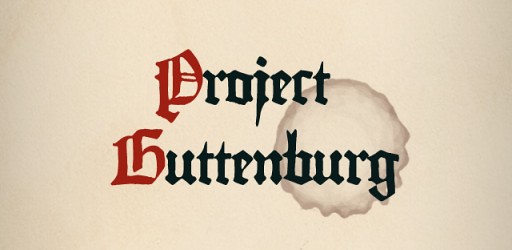Purpose:
Any book lover knows the movie never comes close to the magic of the book and while TV versions come closer, they still can’t compare. Why settle for watered down, inaccurate replications when we can have the fully realized version in the palm of our hands? Introducing HoloBook, the holographic reader that renders 3D visuals using the Kindle. The HoloBook combines the technology of audiobooks with holograms to create a movie right on the pages of your novel.
When the typical book lover is asked why they enjoy reading, usually the answer is they want an escape. They want to live in worlds where anything is possible and you can be anything. Books have an amazing immersive quality and the best reading experience is when you completely forget that there are even words on the page and all you can see are the descriptions and hear the dialogue. The HoloBook will allow readers to experience this on demand.
Audience:
With the growing young adult genre, there are now more books targeted to young people today than ever before. As there are so many YA novels out there, we as readers know that only a small, select handful of the most popular books and series will be turned into the movies and TV shows. This would give the HoloBook the largest pool to draw from and have the most new material create from.
The YA genre targets people fourteen years old and up (Williams) and differs from a ‘teen’ novel in the way that it is more likely to deal with topics of “sex, tackle challenging issues and adult relationships, and feature swearing” (Williams). The YA genre appeals to a wide range of people with its numerous subgenres and appeals to more than just teens. Some research shows that YA novels are bought more frequently by adults than teen in some cases (Williams). YA has a more fluid audience than most genres, giving us the largest customer base.
Specifications:
The product will be an add-on available for purchase on new Kindles and uses the reader technology to process the words on the page to create the images projected from micro-projectors under the surface of the glass. The images will be full color and the story will be read out via a small speaker in the bottom corner or through headphones, volume adjuster is located near the speaker. When not in projecting mode the HoloBook can be used like a tablet to access the social book site, GoodReads, allowing the user to easily update their progress and find discussion boards for the book.
The HoloBook will use a micro-USB charger that will plug in near the speaker. The battery will be lithium ion and made to hold about a three to four hour charge with adjustable settings to increase and decrease brightness and quality of the images. The brightness of the holograms will be easiest to view in indoor lighting and best in dark rooms. The battery is made to hold the three to four hour charge at max settings.
This will have to work with new books coming out and will be created by a graphic designer (or author with design experience) who will work closely along side the author to create their vision. The HoloBook’s detail will be determined by the author and the artist, clearly the more detailed, movie like versions will take longer amounts of time and possibly more than one artist. They will be released after the original book has been released just like a movie would be.
It will be sold like Whispersync where the audio version will be purchasable in combination with the visuals. With Whispersync, the eBook version and the audio version are sold together for only a dollar or two more than buying just the eBook alone. Looking at the average price of Audible books, without a membership, being between fourteen dollars and thirty-nine dollars (Audible.com), adding the visuals would probably increase the price of the typical audiobook to forty to fifty dollars. The narration will be done professionally for the highest quality story reading. Currently, there are two different ways to listen to eBooks with Kindle. The first is Audible which is done professionally, the second is text-to-speech technology which is a experimental feature of Kindles that uses a “remarkably human sounding for a computer-generated voice” (“Let Your Kinde”) to read the text out in a monotone voice.
Looking at the average price of Audible books, without a membership, being between fourteen dollars and thirty-nine dollars (Audible.com), adding the visuals would probably increase the price of the typical audiobook to forty to fifty dollars. The narration will be done professionally for the highest quality story reading. Currently, there are two different ways to listen to eBooks with Kindle. The first is Audible which is done professionally, the second is text-to-speech technology which is a experimental feature of Kindles that uses a “remarkably human sounding for a computer-generated voice” (“Let Your Kinde”) to read the text out in a monotone voice.
A possible addition to make the HoloBook easier to use is gesture technology. The current technology for gesture tech for a product like this is in existence. It is called GestTrack3D, which “lets you control interactive displays and digital signs from a distance with hand and full body gestures” (“3D Depth Sensing”) which acts like Kinect technology and only differs in that the distance from the screen does not matter. The gesture tech would make it so the book could be paused, played, fast forwarded, rewound, and highlighted to go back later on the eBook version. As the technology for the HoloBooks because more advanced it may even allow for interaction with the characters and the setting.
Advertising:
The HoloBook will be marketed to people between the ages of 16-25 using advertisements targeted to social media websites like Facebook, Twitter, and GoodReads, and commercials for YouTube. The HoloBook will be advertised to appeal to book lovers and to movie lovers alike.
The ads will be similar to those of movies and be put especially on YouTube where teens spend hours upon hours of watching of video content and will be most likely to see it. GoodReads advertises the newest books along the sides and on banners, usually they are stills but some are videos. GoodReads would probably where the advertisements would first appear because it is a site intended for book lovers who would most appreciate this. Since the book will be movie-like, playing previews for the HoloBook before movies in theaters. The commercials would be about the same length of a movie preview and contain about the same amount of “teaser”.
The HoloBook will change the way people read books. It creates a new, visual way to enjoy our favorite stories, to see the magic and mystery up close and personal unlike anything we see on the market today. Currently there is nothing on the market like HoloBook as it combines the best features of movies and audiobooks to bring a more immersive experience to the reader. The immersion aspect of this product is possibly it’s most important. People use books as an escape from reality, the more immersive the technology the better. Book lovers will no longer have to struggle with interpreting and envisioning what an author is trying to get use to see. And unlike movie versions, the author doesn’t have to compromise their work to make it more suited to the silver screen.
Prototype
https://www.youtube.com/watch?v=Y60mfBvXCj8 (Projection Video)
https://www.youtube.com/watch?v=mGiwROBW5fM (Explanation of Different types of holograms we have currently)
Work Cited:
Chauncey Frend. Imagination Forge: Holographic Display Technology (S1E1). N.p. Film.
“How to Download a FREE Whispersync for Voice Each Month with Amazon Prime | Lia Belle.” liabelle.me. N.p., 5 Sept. 2014. Web. 6 May 2017.
“Let Your Kindle Read to You with Text-to-Speech.” dummies. N.p., n.d. Web. 6 May 2017.
VirusKiste. Hologram Project by Kiste. N.p. Film.
Williams, Imogen Russell. “What Are YA Books? And Who Is Reading Them?” The Guardian 31 July 2014. Web. 6 May 2017.


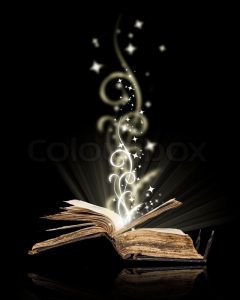
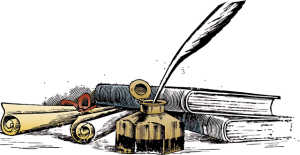
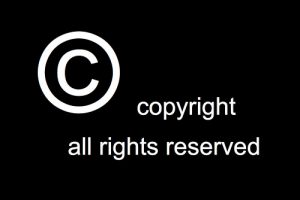
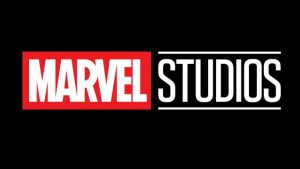 Now that DC and MARVEL have become popular in not only comics but movies and TV, the companies are buying back the rights to certain characters that they once sold, such as MARVEL selling Spiderman to Sony. It has taken years for them to regain the copyright over the character and they are only regaining it due to the copyright expiring. Another place we see copyright blocks is for marching bands. Bands have to buy the rights to the songs they use and this can cost thousands of dollars. This makes it difficult for bands with small budgets to succeed. This also becomes an issue when looking at Fandoms. Fandoms create artwork, fanfiction, and alternative universes using characters from books, movies, and TV, copyrights certainly come into question when we look at these and authors/artists must put disclaimers on their work to protect themselves.
Now that DC and MARVEL have become popular in not only comics but movies and TV, the companies are buying back the rights to certain characters that they once sold, such as MARVEL selling Spiderman to Sony. It has taken years for them to regain the copyright over the character and they are only regaining it due to the copyright expiring. Another place we see copyright blocks is for marching bands. Bands have to buy the rights to the songs they use and this can cost thousands of dollars. This makes it difficult for bands with small budgets to succeed. This also becomes an issue when looking at Fandoms. Fandoms create artwork, fanfiction, and alternative universes using characters from books, movies, and TV, copyrights certainly come into question when we look at these and authors/artists must put disclaimers on their work to protect themselves.